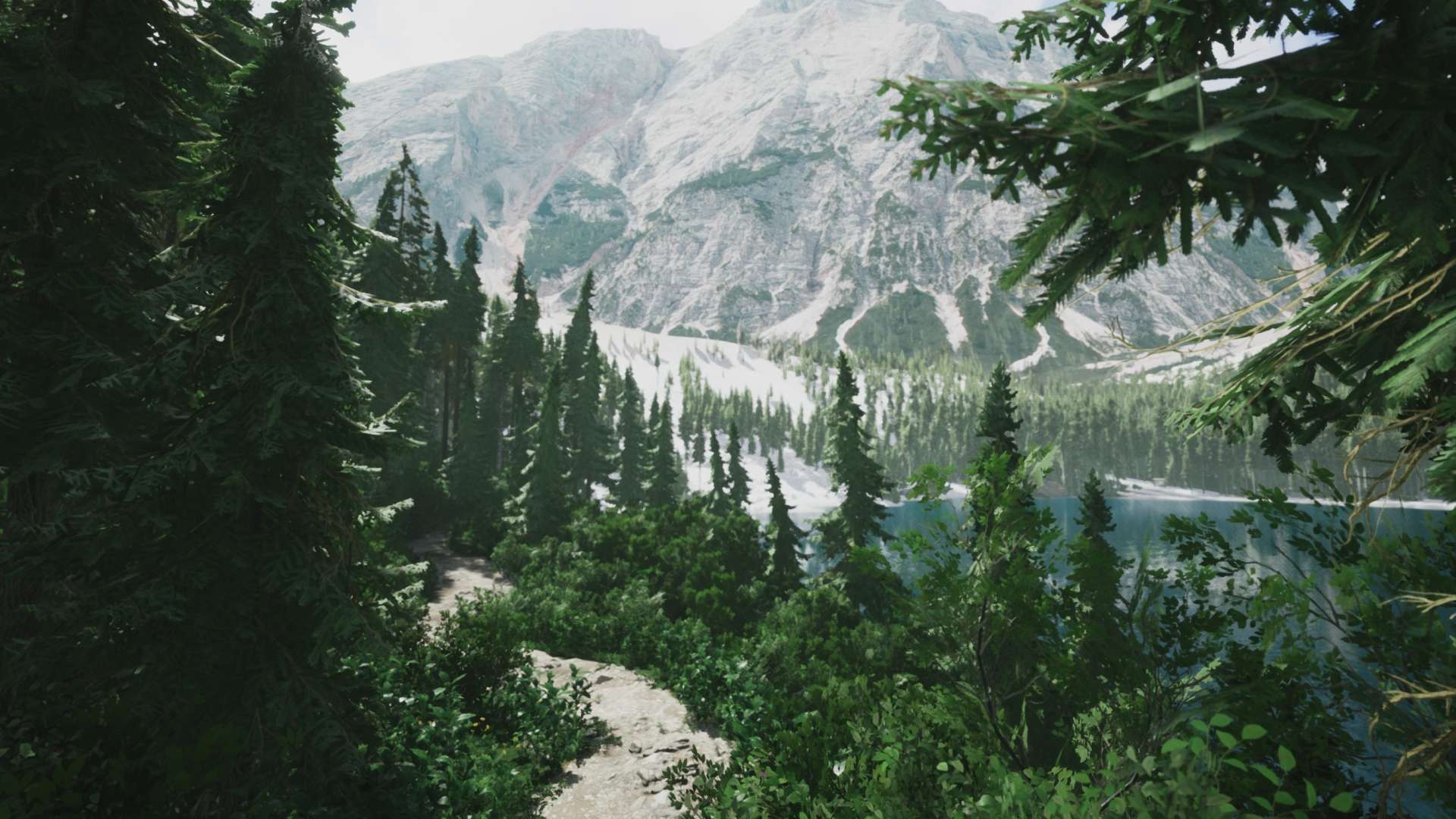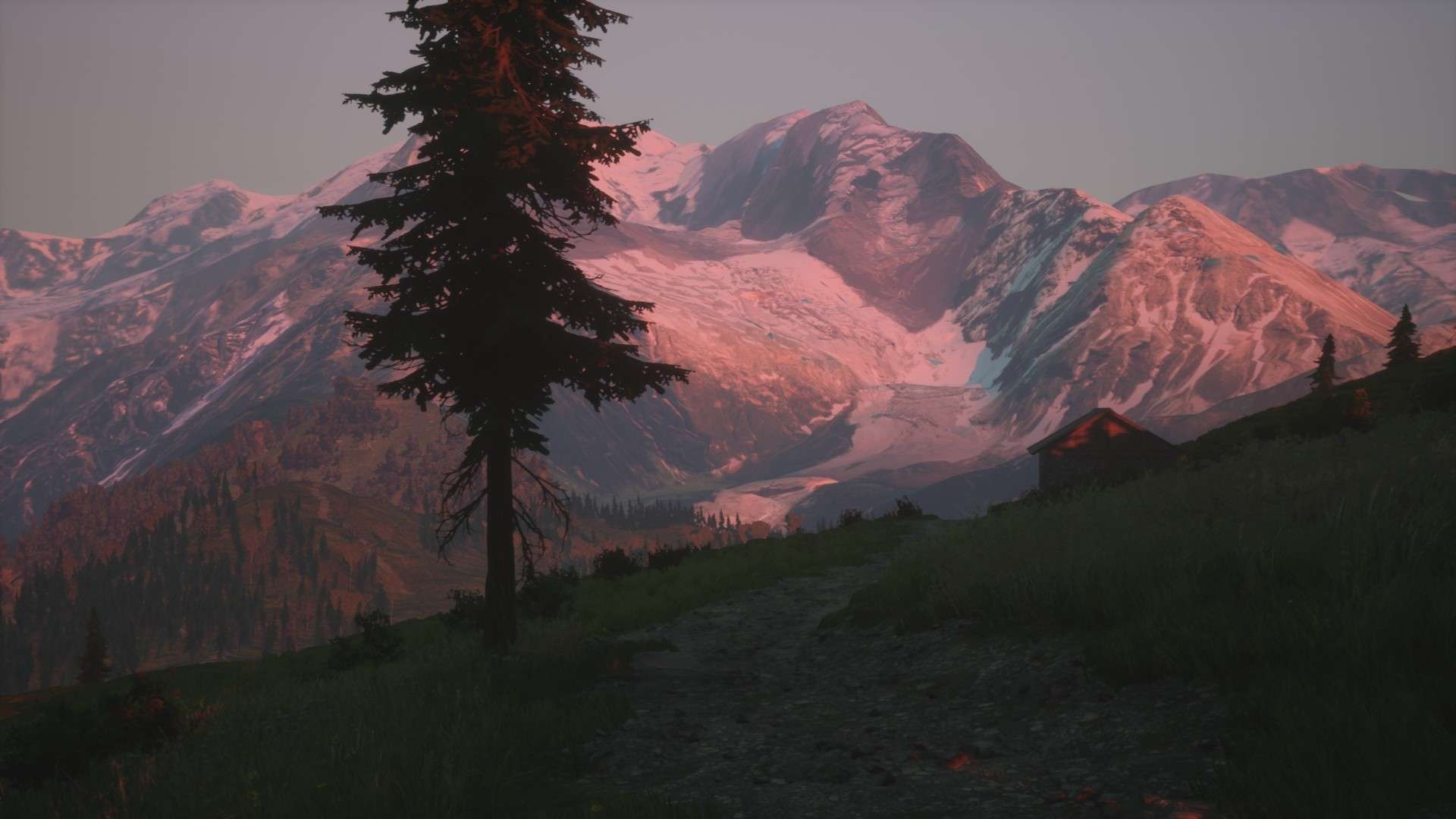
Unreal Engine is known for allowing game developers to create stunningly realistic environments and lighting, even with limited resources. Epic's addition of the photogrammetry library Quixel expanded the possibilities further with its collection of real-world high-definition photography (also see our pick of the best game development software).
A couple of months ago, we spoke to Matt Newell about how he used the tech to develop a surprising game that involves taking photos in natural real-world locations – his Lushfoil Photography Sim. Now the solo developer has given more insight into the making of the game in Unreal Engine.
Matt's Lushfoil Photography Sim is an immersive game in which players trek through beautifully crafted and highly realistic-looking environments to capture vistas with an in-game camera. The game simulates how real photos are captured, providing control over shutter speed, aperture, ISO and white balance, and even allowing a long-exposure effect with realistic motion trails.
Matt developed the game alone, while Annapurna came in to help with console porting and Steven Green helped with the sound. In an interview for the Unreal Engine blog, he talks about how he learned Unreal Engine from scratch by using resources from the UE website and engaging with the development community.
He also details some of the specific Unreal Engine features that he used for his game, including Distance Fields, Contact Shadows, and Virtual Textures.

"Creating environments in Unreal felt very liberating, as I could fine-tune almost any aspect like light, framing, composition: things that don't easily come together when doing real-world photography," he says.
"I considered Unreal among other 3D software such as Cinema4D and Blender, but real-time graphics were way more intriguing (and proved to be far more efficient when creating renders to meet client deadlines)."
Matt says he was inspired by walking simulator games and eventually began to incorporate light first-person mechanics to his environments by using UE templates.
"The Epic ecosystem has essentially been the catalyst to make this project possible," he says. "Working by myself, the resources available allowed me to save enough time in order to get everything done, not to mention the abundance of free assets and learning resources."
Matt says the addition of Quixel Megascans for free for UE users "felt like Christmas Day", making a huge difference the project. As for Unreal Engine itself, he highlights three key features that were instrumental in developing the game.
He cites the contribution of Distance Fields to a cost-effective way to add realistic ambient occlusion and other material effects, while he used Contact Shadows to add small-scale shadows on surfaces and geometry to bring out details in the environment and make scenes look more real. Finally, he used Virtual Textures to save performance and blend environmental assets together.

The game is non-linear in that it gives the player a lot of freedom: there's no 'incorrect' direction to walk or approach objectives. Matt says he tried not to see the project as a 'game' and aimed to reduce game-like occurrences of things like objectives and popups to focus on maintaining the player's sense of presence in the world.
But who is the game really for? "Hopefully everyone, photographer or not," Matt says. "As much as I've tried to appeal to enthusiasts with all of the camera settings and photo-effect simulations, photography at its core is really just about creating and cherishing experiences, which is what I've tried to reflect in this game.
"I think each person will value something different with Lushfoil, but regardless of how the game is perceived, hopefully everyone will have a nice bunch of screenshots to look back on after playing."
See the full interview on the Unreal Engine website. You might want to check out Epic Games' new tutorials on switching from Unity to Unreal Engine 5.
Want to delve into real photography? See our pick of the best camera phones.







